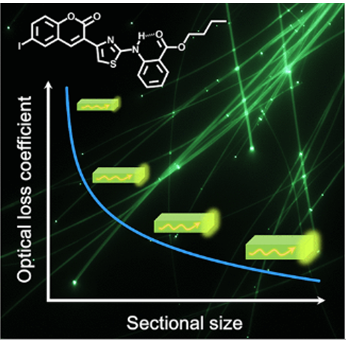Scale Effect of a Fluorescent Waveguide in Organic Micromaterials: A Case Study Based on Coumarin Microfibers
Shenxi Min†, Ashish Dhamsaniya‡, Lina Zhang†, Guangliang Hou†, Zengli Huang§, Kaushik Pambhar‡, Anamik K. Shah∥, Vaibhav P. Mehta*,⊥, Zhenghui Liu*,§(刘争晖), and Bo Song*,† (宋波)
† College of Chemistry, Chemical Engineering and Materials Science, Soochow University, Suzhou 215123, Jiangsu, People’s Republic of China
‡ Center of Excellence, Department of Chemistry, Saurashtra University, Rajkot 360005, Gujarat, India
§ Suzhou Institute of Nano-tech and Nano-bionics, Chinese Academy of Sciences, Suzhou 215123, Jiangsu, People’s Republic of China
∥ Gujarat Vidyapith Nr. Income Tax Office, Ashram Road, Ahmedabad 380014, Gujarat, India
⊥Department of Chemistry, Marwadi University, Rajkot-Morbi Highway Road, Guaridad, Rajkot 360003, Gujarat, India
J. Phys. Chem. Lett. 2019, 10, 5997--6002
The classical method for evaluating the waveguide ability only focuses on the optical loss coefficient. However, for the micro- or submicroscale, an organic waveguide is demonstrated by the present study whose scale effect should not be neglected. We found that the optical loss coefficient increased remarkably when decreasing the sectional size of the microfibers. Furthermore, simulations based on Finite-Difference Time-Domain also demonstrated the size-dependent effect of the waveguide. Both the experimental and simulating results showed that the optical loss coefficient converges to a certain value, which means that the scale effect can be neglected as the sectional size is large enough. On the basis of the present study, we suggest that the scale-dependent effect on the sectional size of the waveguide should be investigated by evaluating the waveguide ability by the optical loss coefficient.

链接:https://pubs.acs.org/doi/10.1021/acs.jpclett.9b02315